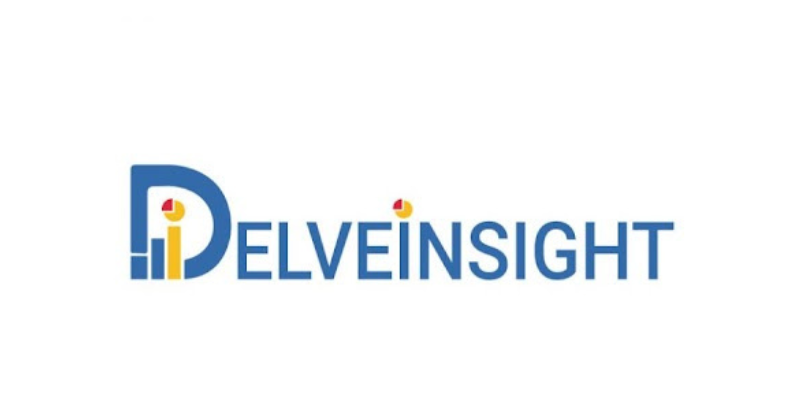Commandité
Graft Versus Host Disease Market – DelveInsight Analysis and Future Outlook

Graft Versus Host Disease (GVHD) remains one of the most serious and complex complications following allogeneic hematopoietic stem cell transplantation (HSCT). Even with notable advancements in transplantation techniques and supportive care, GVHD continues to impact survival rates and quality of life for patients. A deeper understanding of the disease’s biology has driven research and innovation, reshaping the Graft Versus Host Disease Treatment Market with new opportunities and challenges.
Understanding the Graft Versus Host Disease Treatment Market
GVHD arises when donor-derived immune cells attack the recipient’s tissues after an allogeneic transplant. It is classified into two main forms:
Acute GVHD
-
Appears within the first 100 days post-transplant.
-
Primarily affects the skin, liver, and gastrointestinal tract.
Chronic GVHD
-
Develops later, often resembling autoimmune disorders.
-
Can involve multiple organs with long-lasting complications.
The risk and severity of GVHD are influenced by donor-recipient HLA compatibility, conditioning regimens, and prophylaxis strategies. Despite better matching and preventive measures, GVHD remains a leading cause of transplant-related morbidity and mortality.
GVHD Market Dynamics
The GVHD Market Dynamics reflect a blend of increasing clinical demand, innovation, and regulatory support. Growth drivers include higher transplant volumes and improved awareness of GVHD, while challenges stem from treatment complexity and high healthcare costs.
Key factors shaping the market:
-
Rising HSCT Procedures – Expanding indications for transplantation increase the at-risk population.
-
Unmet Needs – Steroid-refractory and relapsed GVHD cases remain difficult to manage.
-
Research and Development – Strong pipelines with targeted therapies and biologics under investigation.
-
Regulatory Support – Orphan designations and priority reviews accelerate access to new treatments.
Current GVHD Treatment Landscape
Traditional management strategies for GVHD are evolving as novel therapies emerge.
Standard Therapies
-
Corticosteroids – First-line treatment for both acute and chronic GVHD, though limited by resistance and toxicity.
-
Calcineurin Inhibitors (CNIs) – Tacrolimus and cyclosporine widely used in prophylaxis.
-
Antimetabolites and mTOR Inhibitors – Mycophenolate mofetil and sirolimus serve as additional options.
Novel Approaches
-
JAK Inhibitors – Ruxolitinib, approved for steroid-refractory GVHD, represents a breakthrough therapy.
-
Monoclonal Antibodies and Biologics – Target pathways like IL-2, TNF-alpha, and B-cell regulation.
-
Cellular Therapies – Mesenchymal stem cells (MSCs) and regulatory T-cell approaches show promise in restoring immune balance.
Emerging Therapies and Pipeline Outlook
The pipeline in the GVHD Drugs Market is robust, with innovative candidates under clinical evaluation.
-
Next-Generation JAK/STAT Inhibitors – Exploring improved selectivity and safety profiles.
-
Novel Monoclonal Antibodies – Targeting IL-2, TNF-alpha, and CD20 in refractory patients.
-
BTK and Proteasome Inhibitors – Investigated for immunomodulatory effects.
-
Microbiome-Based Therapies – Modulating gut microbiota to mitigate gastrointestinal GVHD.
-
Advanced Cell Therapies – MSCs and engineered Tregs to promote long-term tolerance.
These advancements suggest a shift toward personalized and mechanism-based approaches.
GVHD Market Size and Growth Forecast
The GVHD Market Size is projected to expand significantly in the coming years, supported by:
-
Growing HSCT rates worldwide.
-
Increasing GVHD prevalence due to haploidentical and unrelated donor transplants.
-
Regulatory approvals of new drugs like ruxolitinib and belumosudil.
-
Rising awareness and earlier diagnosis among healthcare providers.
The United States leads the global market with high transplant volumes and rapid adoption of novel therapies, followed by Europe. The Asia-Pacific region is expected to witness the fastest growth due to expanding healthcare access and clinical trial activity.
Challenges in the GVHD Drugs Market
Despite progress, the GVHD Drugs Market faces barriers such as:
-
Therapy Resistance – Many patients fail to respond to steroids and second-line therapies.
-
High Treatment Costs – Limits accessibility in resource-constrained regions.
-
Safety Issues – Long-term immunosuppression increases risks of infections and cancers.
-
Disease Heterogeneity – Variable clinical presentations complicate management.
-
Lack of Biomarkers – Hinders early diagnosis and monitoring of disease progression.
Addressing these issues will require biomarker development, better supportive care, and innovation in drug discovery.
Competitive Landscape
The GVHD Companies are intensifying competition with investments in research, clinical development, and regulatory approvals. Leading pharmaceutical and biotech players are advancing trials while also entering collaborations, licensing deals, and acquisitions.
In addition to drug development, GVHD Companies are focusing on digital tools, companion diagnostics, and patient monitoring solutions to improve treatment outcomes.
Future Outlook
The future of the Graft Versus Host Disease Treatment Market is highly promising, with a shift toward targeted therapies, cellular immunotherapies, and biomarker-driven strategies. Personalized medicine is expected to redefine treatment, while preventive approaches may reduce overall disease burden.
As transplantation rates continue to grow, GVHD will remain a significant therapeutic challenge, ensuring long-term opportunities within the GVHD Drugs Market.
Conclusion
Graft Versus Host Disease remains a major post-transplant complication with considerable unmet needs. DelveInsight’s analysis shows that the GVHD Market Size will expand steadily due to rising transplantation rates, scientific innovation, and new therapies. Although challenges such as resistance, safety, and costs persist, ongoing research into targeted biologics, cellular therapies, and precision medicine is set to transform the GVHD treatment paradigm in the coming decade.
Latest Reports by DelveInsight:
Novel Drug Delivery Devices Market | Osteoarthritis Market | Physiotherapy Equipment Market | Retinopathy Of Prematurity Market | Urolithiasis Market | Vaginal Rejuvenation Systems Market | Valley Fever Market | Acute On Liver Failure Market | Adrenal Cortex Neoplasms Market | Advanced Cancer Pain Management Market | Aids Related Kaposi’s Sarcoma Market | Angioedema Market | Autosomal Recessive Congenital Ichthyosis Market Size | B-cell Non-hodgkin Lymphoma Market | Balloon Valvuloplasty Device Market | Blood Glucose Monitoring Systems Market | Bone And Joint Infection Market | Cannabis Use Disorder Market | Capnography Devices Market | Carcinoid Syndrome Market
About DelveInsight
DelveInsight is a leading Business Consultant, and Market Research firm focused exclusively on life sciences. It supports Pharma companies by providing comprehensive end-to-end solutions to improve their performance. It also offers Healthcare Consulting Services, which benefits in market analysis to accelerate the business growth and overcome challenges with a practical approach.
Media Contact
Company Name: DelveInsight Business Research LLP
Contact Person: Abhishek kumar
Email: abhishek@delveinsight.com
City: Albany
State: New York
Country: United States
Website: https://www.delveinsight.com







